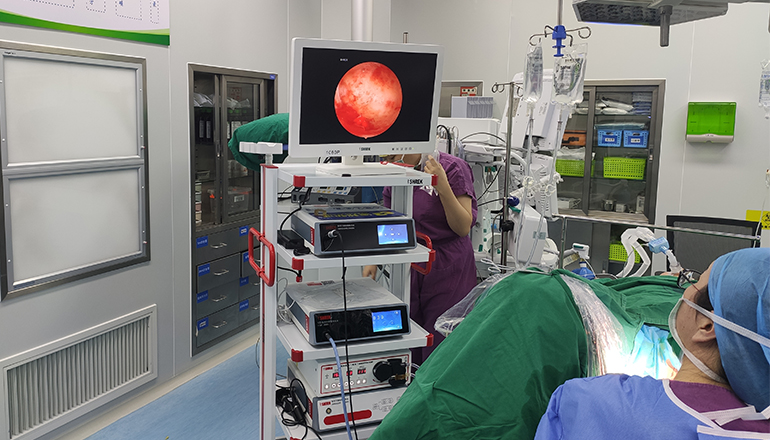- Shanghai, China
- [email protected]
- +86-21-58189111
Hysteroscopic removal of intrauterine foreign bodies is a minimally invasive surgical procedure that involves the removal of objects that are lodged inside the uterus. These foreign bodies can include pieces of contraceptive devices, surgical sponges, and other objects that have accidentally been left behind during medical procedures.
Foreign bodies inside the uterus can cause a range of symptoms, including abnormal vaginal bleeding, pelvic pain, and infection. The hysteroscopic removal of these foreign bodies can help alleviate these symptoms and prevent further complications.
The procedure is typically performed under general anesthesia and is usually an outpatient procedure, meaning the patient can go home the same day. The hysteroscope is inserted into the uterus through the cervix, and the surgeon uses specialized instruments to locate and remove the foreign body. Depending on the size and location of the object, the surgeon may use small forceps or a small basket to remove it.
After the procedure, the patient may experience some mild cramping and spotting, but these symptoms usually resolve within a few days. The patient may be prescribed pain medication or antibiotics to manage any discomfort or prevent infection.
The success of hysteroscopic removal of intrauterine foreign bodies depends on several factors, including the size and location of the foreign body, the skill and experience of the surgeon, and the patient's overall health. In some cases, multiple procedures may be required to fully remove the foreign body.

Hysteroscopic removal of intrauterine foreign bodies is a safe and effective procedure that can help alleviate symptoms and prevent further complications. It is important for patients to consult with a qualified gynecologist or reproductive specialist to determine if this procedure is appropriate for their individual needs and circumstances.
In addition, patients should also take steps to prevent foreign bodies from becoming lodged inside the uterus in the first place. This can include carefully following instructions for the insertion and removal of contraceptive devices, and ensuring that all medical instruments are properly accounted for and removed after a medical procedure.
In conclusion, hysteroscopic removal of intrauterine foreign bodies is a valuable tool in the treatment of women with foreign bodies inside their uterus. With proper evaluation, diagnosis, and treatment planning, patients can undergo this procedure safely and effectively with the help of a skilled gynecologist or reproductive specialist.
It is important for patients to seek medical attention promptly if they suspect that they have a foreign body inside their uterus. Delaying treatment can increase the risk of complications, including infection, scarring, and damage to the reproductive organs.
In summary, hysteroscopic removal of intrauterine foreign bodies is a minimally invasive procedure that can effectively remove objects lodged inside the uterus. The procedure is safe and has a high success rate when performed by a skilled and experienced surgeon. Patients should work closely with their healthcare provider to determine if this procedure is appropriate for their individual needs and circumstances, and should take steps to prevent foreign bodies from becoming lodged inside the uterus in the future.
Leave a Comments